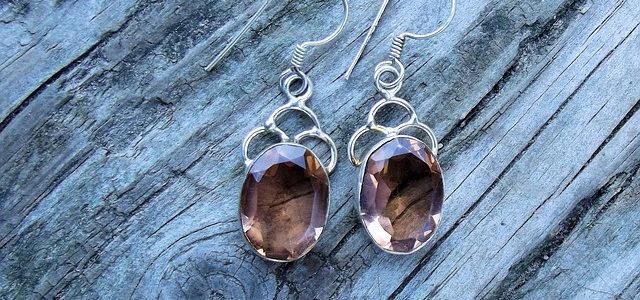Imperial topaz is otherwise called “valuable topaz”. It is the most looked for after common topaz. Considered to be the color of the setting sun, imperial topaz gets its name from the Russian tsars of the seventeenth century. This is on the grounds that the tsars guaranteed elite rights to the pink topaz gemstones that were mined in Russia. Imperial topaz is less regular than different kinds of normally occurring topaz, which makes it increasingly significant. Imperial topaz was customarily considered to be orange with red dichroism, (this implies when inclined in the light, imperial topaz can seem red or orange), however, these days it is all the more broadly characterized as yellow, pink, red, lavender-pink and peach-pink topaz.
Identifying Imperial Topaz
Imperial topaz is yellow, pink, or pink-orange. The normal pink assortment is extremely uncommon. Brazilian imperial topaz can go in color from splendid yellow to profound brilliant brown and is at times even violet. Imperial topaz can be recognized from other pink gems, for example, kunzite, tourmaline, sapphire, and ruby by its hardness (8 on the Mohs scale). Ruby and sapphire are harder, at 9, and kunzite and tourmaline are gentler. Yellow imperial topaz can likewise be identified by its hardness; citrine and brazilianite are milder. Apatite, fluorite, and zircon are gems that can show up in pink and yellow, however, they are gentler than topaz. Yellow and pink phenakite can be recognized from topaz by its trigonal gem structure. Spinel can be distinguished from topaz by its cubic precious stone structure. Yellow chrysoberyl is more diligently than imperial topaz and has a higher refractive record. Valuable beryl has undefined cleavage, in this manner recognizing it from imperial topaz, which showcases impeccable cleavage.
Imperial Topaz Color
Initially, imperial topaz was classified as orange with red dichroism. These days imperial topaz is characterized all the more generally to incorporate yellow, pink, red, lavender-pink, and peach-pink. Here and there, the color of imperial topaz can bit by bit blur after some time, when presented to daylight.
Imperial Topaz Clarity and Luster
Imperial topaz is straightforward to translucent. It shows high clearness with barely any considerations, so topaz gemstones can be analyzed by the unaided eye and saw as “eye clean”, which implies that no flaws can be seen. Imperial topaz is exceptionally valued for its splendor and vitreous (glassy) radiance.
Imperial Topaz Cut and Shape
Imperial topaz is an adaptable material. Therefore it very well may be cut into an incredible assortment of shapes, for example, square, round, octagon, pear, oval, heart, and even extravagant shapes. Unequivocally colored gemstones are typically scissor cut whereas pitifully colored stones are commonly splendidly cut. This best shows off the splendor and lucidity of the gems. When imperial topaz has unpredictable considerations, it is regularly a cabochon cut. The hardness of imperial topaz makes it impervious to scratches. Nonetheless, lapidarist must deal with topaz cautiously because of its ideal cleavage, which implies that it can easily crack.
Imperial Topaz Treatment
Imperial topaz isn’t typically rewarded or upgraded. Be that as it may, orange-brown imperial topaz can be heat-rewarded during a procedure known as “pinking”, which creates a purplish-pink color. Normally, Pink topaz is uncommon and is typically a pale shade of pink. It happens in Pakistan. Topaz can likewise be covered to create distinctive pink and mirror “imperial topaz”. Respectable diamond merchants consistently proclaim such medicines.

